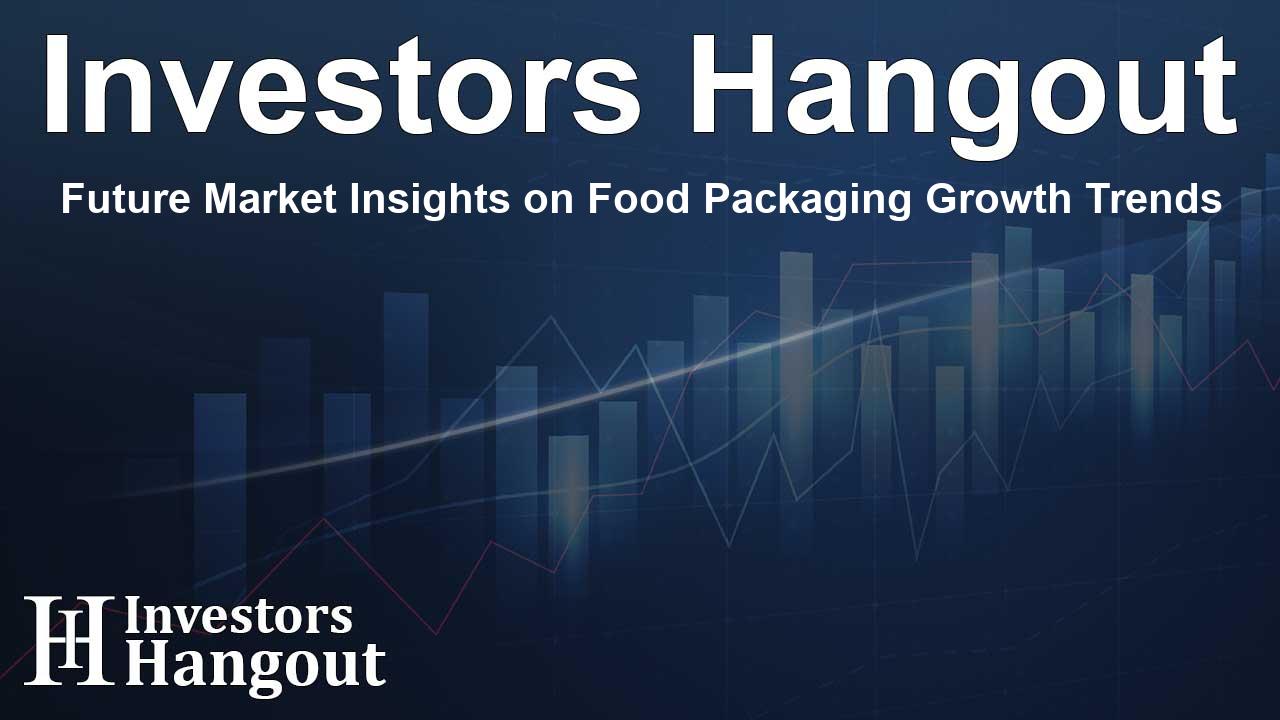Future Market Insights on Food Packaging Growth Trends

Significant Growth in the Global Food Packaging Market
The global food packaging market is gearing up for noteworthy expansion, with estimates indicating a rise from USD 353.7 billion in the current year to USD 592.8 billion in the upcoming decade. This impressive growth translates to a compound annual growth rate (CAGR) of 5.3%, highlighting a robust future for industry participants.
Market Driving Forces and Dynamics
The food packaging sector is currently undergoing a transformative phase fueled by increasing consumer preference for convenience meals, heightened attention to food safety, and notable advancements in packaging technologies. The projected growth signifies a vibrant landscape that stakeholders can tap into, particularly as the market adjusts to growing demands.
Convenience and Safety at the Forefront
As consumers lean more towards ready-to-eat meals, the demand for well-packaged items that ensure safety and extend shelf life has surged. According to recent analysis, the food packaging industry was valued at USD 335.9 billion just last year, making it clear that convenience is a top priority for consumers today.
The Booming Dairy Sector
In this climate, dairy products have emerged as significant players, holding about 25.3% of the overall market in 2022. The ongoing global demand for dairy coupled with efficient packaging needs positions this segment for substantial growth in the foreseeable future.
Leading Materials: Plastic and Paper Packaging
Plastic packaging remains a dominant force within the food packaging sphere, capturing nearly 41.6% of the total market share. Notwithstanding the regulatory challenges and consumer concerns surrounding single-use plastics, the sector is swiftly adapting through innovation in bioplastics and post-consumer recycled materials.
Shifting Trends Toward Sustainability
Paper packaging has also gained traction, particularly in confectionery and bakery solutions, with expectations for its demand to potentially double in the next five years. The movement towards sustainable options reflects a growing awareness among consumers who are increasingly seeking environmentally friendly packaging alternatives.
Key Insights and Innovations in Packaging
The food packaging industry’s future looks bright, characterized by several key insights:
- Dairy Products Dominance: The dairy sector drives a substantial portion of market growth, supported by innovations aimed at extending product longevity.
- Plastic's Continued Relevance: Despite environmental concerns, plastic maintains its grip on the market, projected to grow at a CAGR of 5.1%.
- The Sustainable Shift: A significant pivot towards sustainable packaging solutions underscores the industry's evolution.
- Technological Advancements: Smart packaging that employs active features is paving the way for enhanced food safety.
- Growth in Edible Packaging: Edible packaging is gaining popularity as a viable solution to combat waste.
- Driving Demand for Convenience Foods: The surge in convenience food consumption is compelling companies to innovate.
Industry experts assert that packaging innovations such as edible options and smart packaging technologies are not just trends—they are shaping the future of food packaging.
Adapting to Market Changes
The global food packaging market is reflective of an evolving industry, which shows no signs of slowing down. Market players must remain vigilant and adaptive to thrive amidst rapid changes driven by consumer preferences and sustainability concerns.
Opportunities in Emerging Markets
Countries are illustrated to yield significant growth opportunities in the food packaging arena. Analysts have noted promising potential in regions experiencing increasing food consumption and expanding markets.
Conclusion: The Future of Food Packaging
As the market anticipates progressing toward USD 592.8 billion by 2033, the opportunity for innovation beckons. Companies invested in research and development that align with consumer trends toward health, safety, and sustainability can expect to play a pivotal role in the market's trajectory.
Frequently Asked Questions
What is driving growth in the food packaging market?
Growth is primarily driven by consumer demand for convenience foods, safety, and sustainability.
Which packaging materials dominate the market?
Plastic and paper packaging are the leading materials within the food packaging sector.
How significant is the dairy segment?
The dairy segment holds around 25.3% of the food packaging market share and is experiencing growth due to rising demand.
What innovations are emerging in food packaging?
Innovations include smart packaging with active features and sustainable options like edible packaging.
What is the expected market value by 2033?
The food packaging market is projected to exceed USD 592.8 billion by 2033.
About Investors Hangout
Investors Hangout is a leading online stock forum for financial discussion and learning, offering a wide range of free tools and resources. It draws in traders of all levels, who exchange market knowledge, investigate trading tactics, and keep an eye on industry developments in real time. Featuring financial articles, stock message boards, quotes, charts, company profiles, and live news updates. Through cooperative learning and a wealth of informational resources, it helps users from novices creating their first portfolios to experts honing their techniques. Join Investors Hangout today: https://investorshangout.com/
Disclaimer: The content of this article is solely for general informational purposes only; it does not represent legal, financial, or investment advice. Investors Hangout does not offer financial advice; the author is not a licensed financial advisor. Consult a qualified advisor before making any financial or investment decisions based on this article. The author's interpretation of publicly available data shapes the opinions presented here; as a result, they should not be taken as advice to purchase, sell, or hold any securities mentioned or any other investments. The author does not guarantee the accuracy, completeness, or timeliness of any material, providing it "as is." Information and market conditions may change; past performance is not indicative of future outcomes. If any of the material offered here is inaccurate, please contact us for corrections.